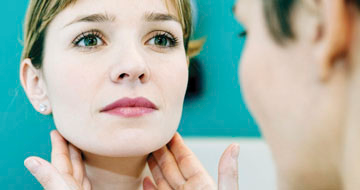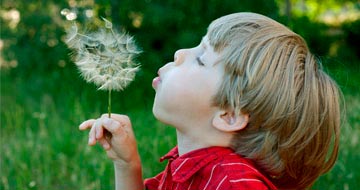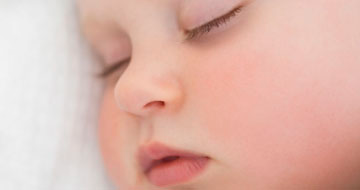
What is allergic rhinitis and can air pollution make childhood respiratory allergies worse?
We talk with Ms Romana Kuchai, consultant ear, nose and throat specialist at our clinic, about allergic rhinitis in children, the effects of pollution on allergic rhinitis, and how she treats the condition.
What are the symptoms of allergic rhinitis?
They’re very similar to hayfever, and a cold: congestion, thick mucus, runny noses. Even watery, irritable eyes. The lower respiratory tract can very quickly become affected, with a lot of mucus dripping down into there like a tap, meaning the chest has to deal with a lot more. If you combine a natural incident of upper respiratory tract infection that children might gather from their nurseries or siblings, and the vulnerability due to their immature immune system, you have a very potent combination of symptoms that can increase the frequency of colds, chest infections, head colds, coughs, and general malaise.
What’s the difference between rhinitis and allergic rhinitis?
Allergic rhinitis is rhinitis (inflammation of the lining of the nose) that’s caused by sensitivity to inhalant allergens (things you breathe in). These include dust, pollen, pets and mould - a whole spectrum of things in our environment.
Non-allergic rhinitis is inflammation of the lining of the nose, where the cause is unknown. It could be an infection. It could be inflammation from things you breathe in that are non- allergic (ie pollution, toxins, smoking). It could also be auto-immune conditions that cause a significant inflammation. So, all the other non-allergic causes. And this is often determined by an allergy test.
Are children living in polluted areas at a higher risk of allergic rhinitis?
There is a lot of evidence to suggest that pollution causes inflammatory changes in the respiratory tract. It’s possible that the pollution propigates allergies but it could also stimulate the response of allergies. Some parents I see notice the improvement in their children when they go on holiday: they’re not facing the same levels of pollution, and they may be sea swimming. I think there’s absolutely no doubt that we are contributing to their illness by not looking after the environment in which they live.
Why does pollution cause inflammation of the airways?
There are a combination of toxins in city air. When you breathe in this air, it can have almost the same detrimental impact on your lungs as smoking. So a child’s immature respiratory tract is trying to deal with an excess load of materials that it doesn’t need, and the reaction when you’re dealing with anything in excess is that it responds by creating inflammation. And inflammation in the lining of the nose is rhinitis.
How do you test a child for allergies?
It’s a skin-prick test on the forearm that tests for common allergens. The extent of the reaction on the child’s skin is assessed to give a positive or negative result. It takes 10-15 minutes to apply and about 15 minutes wait time after that, and it’s pain free for the child.
How accurate are allergy tests?
They’re not 100% specific by any means. But they do carry some weight and credibility in establishing positive allergens, so we can then look to take an allergen avoidance measures – whether that’s advising a parent to wash their child’s bed-linen at a certain temperature, or to avoid having carpet in bedrooms, or indeed having loads of soft toys on the bed. These harbour so much dust!
Can certain foods trigger allergic rhinitis?
It’s a common myth that food sensitivities are related to rhinitis. For example, dairy is often associated with increased mucus production, but that is not an allergic reaction. And I think that it’s so important for parents to have awareness around what an allergy is, and what causes it.
At what age do children tend to be referred to you?
When we talk about the everyday sniffles and colds, they are predominantly under the age of five. It might be the nursery environment that’s causing them to become ill frequently, and their airways are not mature enough, meaning their mucous production levels are heightened, due to rhinitis or enlarged adenoids. Most upper respiratory tract infections at this age are viral, though the implications of these can be quite serious - high temperatures, acute ear infections a deeply uncomfortable child. Of course, pain is not something a parent likes seeing their child in, so it can put the whole family under stress.
How do you treat rhinitis in children?
Children often can’t even explain what’s wrong ,and traditional therapies such as Nurofen or paracetamol might have some effect but not enough. Parents are anxious and understandably not happy. I go through the traditional routes of examining the ear, nose and throat, to see if I can find the source of the inflammation.
Trying to optimise treatment in the short-term is key. And I do advocate – before steroid sprays for any age group – that we look at simple saline rinses. They really help to shift any blockages in the tiny nasal passages. And they’re very easy for parents to use on their children, as there are many different, effective ways to rinse.
This is a case of observing symptoms over a period of time, and working out a comprehensive treatment plan. It’s a cumulative process, and it can take time. Some parents might think “Why is my child not cured?” after two weeks of following a treatment plan. Compliance is key in optimising treatment. In children treatment is slightly different to managing symptoms in adults. ENT specialists understand when there is a safe age for children to use steroid sprays, and the benefits of this type of treatment.
A child may have an undercurrent of rhinitis, but if they’re also snoring readily without any cold or infections, there’s also a probability that they have enlarged tonsils or adenoids. And factor in the environment rhinitis allergies, and these children often come in mouth breathing, sniffly, and full of a cold.
When the infection doesn’t seem simmer down by itself, that’s when I might use my judgement as to whether to escalate treatment to antibiotics. I always try to find the best ways to reduce inflammation and that often comes with a short burst of topical nasal decongestant or saline drops, or sometimes these in combination with topical steroid drops for a period of a week to ten days, to help to dry up the nose, clear the mucus and also open up the ears internally, which suddenly reduces pressure.
Are there any allergy-focused online resources you recommend to parents?
The idea long-term is to empower parents to manage their child’s rhinitis. The UK allergy website is very informative. I recommend it to all my patients because the information they can gather about prevention - which is so helpful - empowers them with facts that can help them to minimise their children’s exposure to the things that could be making symptoms worse.
It’s so important that parents feel that they understand the condition well enough to be able to manage it themselves, especially if they’re moving around and don’t always have access to the same doctor. I think knowing the facts makes them feel a lot more secure, as a child can become sick at anytime.
Are you seeing an increase in parents bringing their children in with allergic rhinitis?
Many more than ever before. Which is, I think, directly related to the environment that we’re living in. I guess the argument now would be: “well, pollution was a lot worse in the Victorian era.” But the point is, with all this education we can’t be going backwards. We have to be going forwards. And although the Environment Agency and the government are already taking action, it’s very slow in coming and it’s not sufficient. There’s a lot of work to do.
Any other tips for optimising health of the respiratory tract?
We brush our teeth, we have a bath or shower but very few people cleanse their respiratory tract on a regular basis. Just applying a saline rinse has great benefits long term. It’s a very easy, non-medicinal remedy and there are many products on the market for both adults and children. I would suggest a saline rinse 3-4 times a week. But if you can do it daily, even better!
Find out more about treating allergic rhinitis
ENT specialist Ms Romana Kuchai offers appointments to children and adults. To find out more or make an appointment, please call 020 7244 4200 or make an appointment online.











